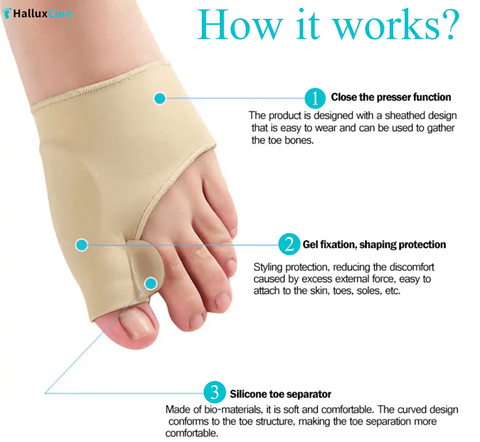While some bunions have no symptoms, many become red, swollen, and painful. They can be so painful that it’s hard for you to put a shoe on or walk. Wearing shoes that fit poorly or have high heels can make bunions worse.
Below are the best ways that you can do to manage the symptoms from your bunions and stop bunion formation from getting worse.
1. Wear the right shoes. Wear proper footwear. Your shoes shouldn’t be tight, the toe area should be wide, and the heel should be less than 1 to 2 inches. It should also have good support for the arch of your foot.
2. Avoid flip-flops. Avoid wearing flip-flops and other shoes that have no arch support because they put extra pressure on the big toe joint.
3. Know your measurements. Ask the sales person to measure the length and width of your foot when you are buying shoes to help ensure a good fit.
4. Size shoes by comfort not number. Shoes from different companies may be sized differently. Always go by what is comfortable, not by your usual foot size.
5. Use inserts in your shoes, so your foot is in proper alignment and the arch is supported. You can use the kind sold in drugstores or have prescription orthotics made.
6. Stretch your toes. Remove your shoes for a little while and wiggle your toes when you can at work or at home to reduce the pressure on your toes.
7. Space your toes out. Use toe spacers at night or while wearing shoes to reduce the pressure on your toes.
8. Cushion your bunions. Cover your bunions with bunion pads or moleskin to relieve some of the pressure and make the bunion less likely to be irritated by your shoes.
9. Soak your feet in warm water with Epsom salt to soothe them and reduce inflammation.
10. Ice your foot. Use ice packs to reduce the swelling and inflammation when your bunion gets sore.
11. Take NSAID pain relievers. Take nonsteroidal anti-inflammatory drugs, such as ibuprofen or naproxen, to reduce the inflammation and pain.
12. Elevate your feet when you are sitting down to reduce the swelling and pain.
13. Rest your feet several times a day, especially if you have been on them all day.
14. Massage your foot and manually move your big toe around to keep the tissue soft and the toe flexible. Rolling a tennis ball under your foot is a good way to massage it.
15. Do foot exercises.
The takeaway
Since they may be partially inherited, you can’t guarantee you will never get bunions, but there are many things you can do to help prevent them.
One of the most effective & podiatrist-recommended ways to treat bunions are orthopedic sleeves with silicone gel pads, specifically designed by professionals, in consultation with surgeons, to release built up pressure & pain in your toes, stop the bunion from progressing to worse conditions, eliminate daily swelling, chronic pain, inflammation, prevent blisters, calluses, corns and get you back on your feet fast without any discomfort.
Wear it around the house during normal daily activities or in bed while asleep as a night sleeve. They are great for walking, running and people who like to stay active. They slip onto the foot like a sock and can be worn in shoes, socks, barefoot all day for maximum comfort and pain relief.



